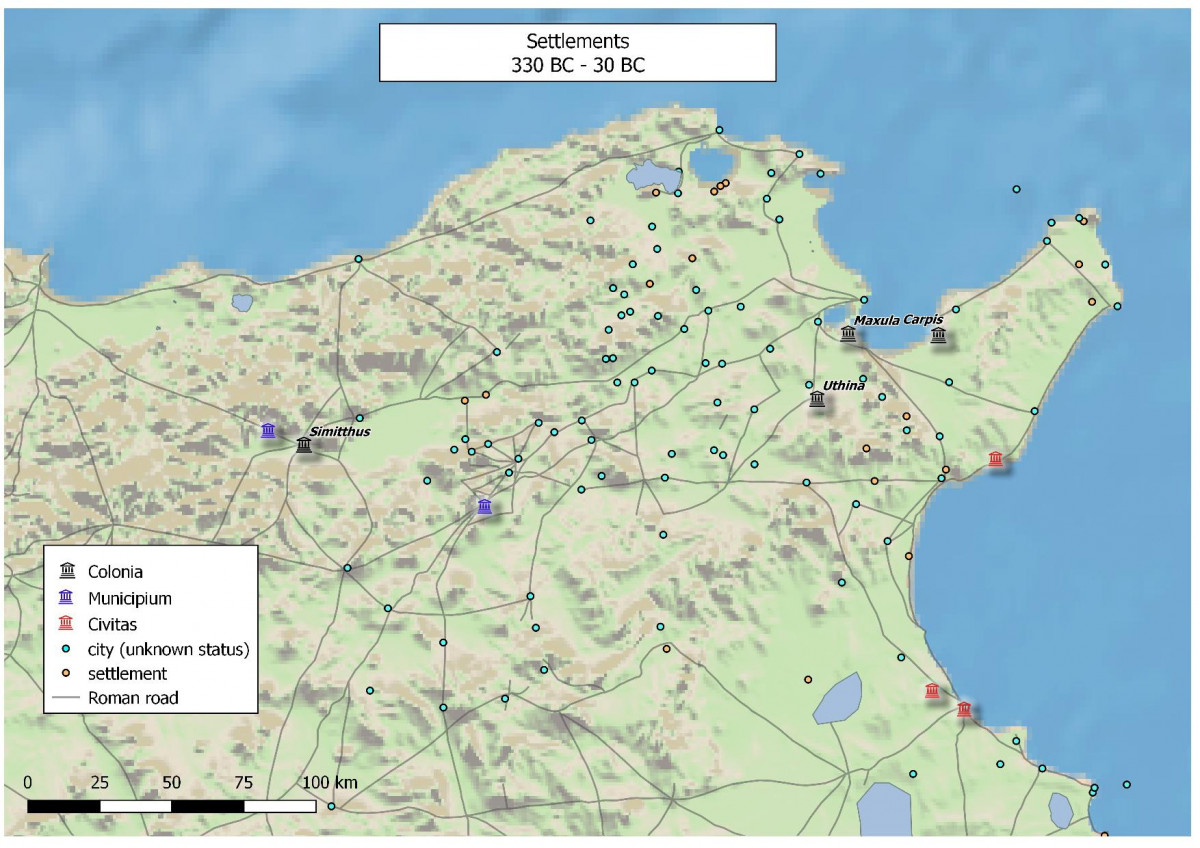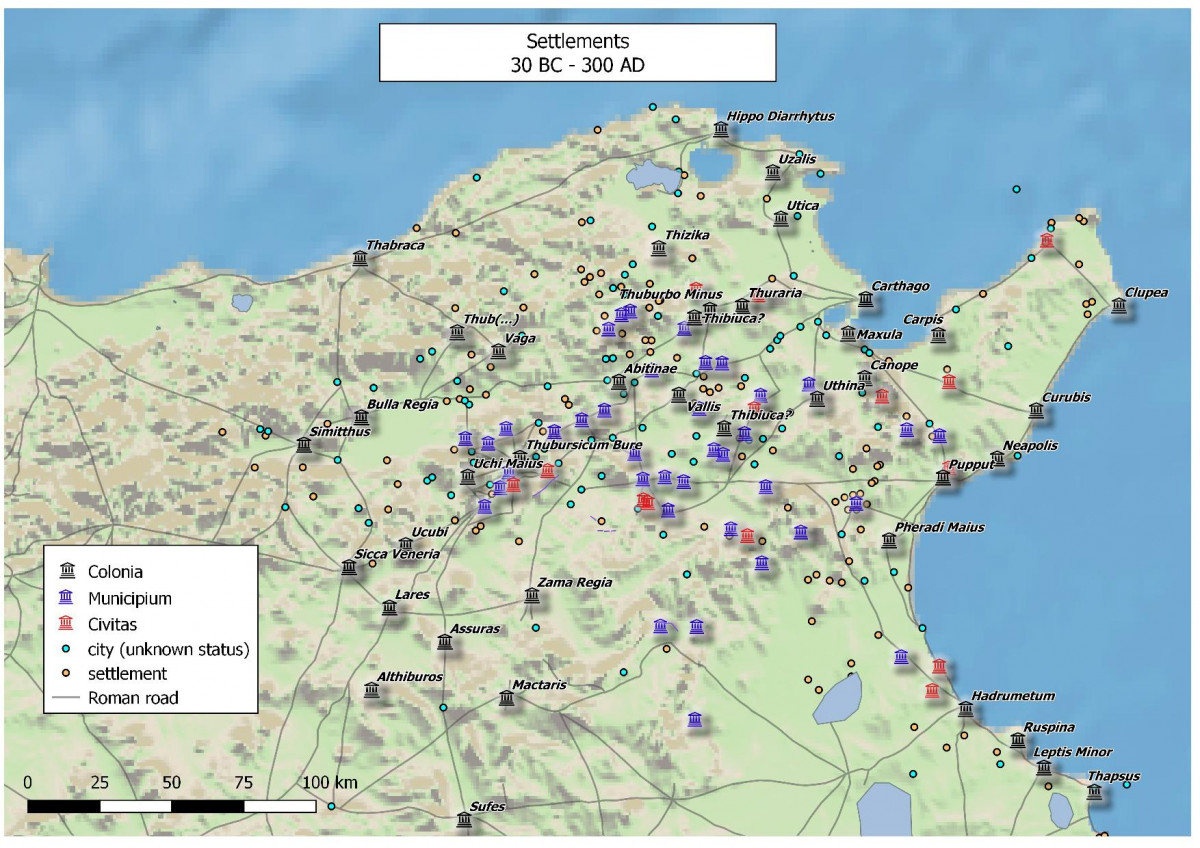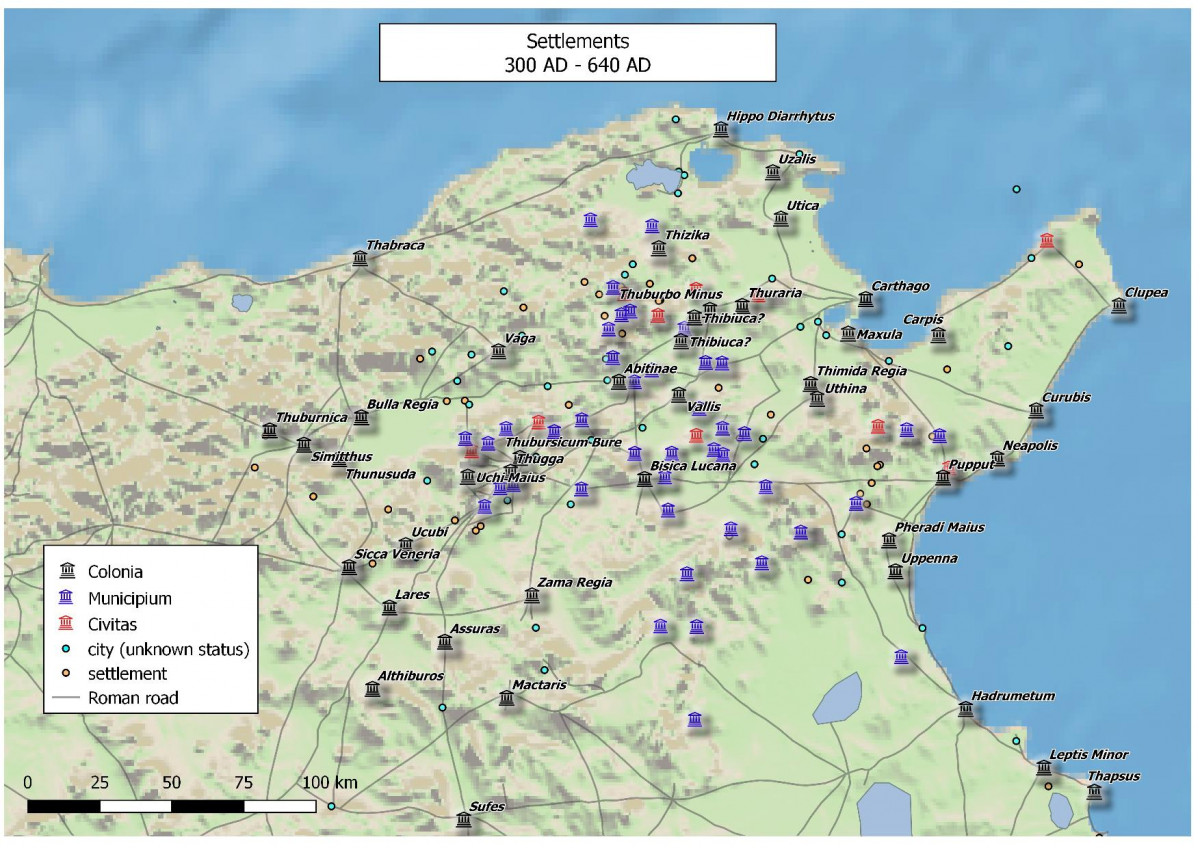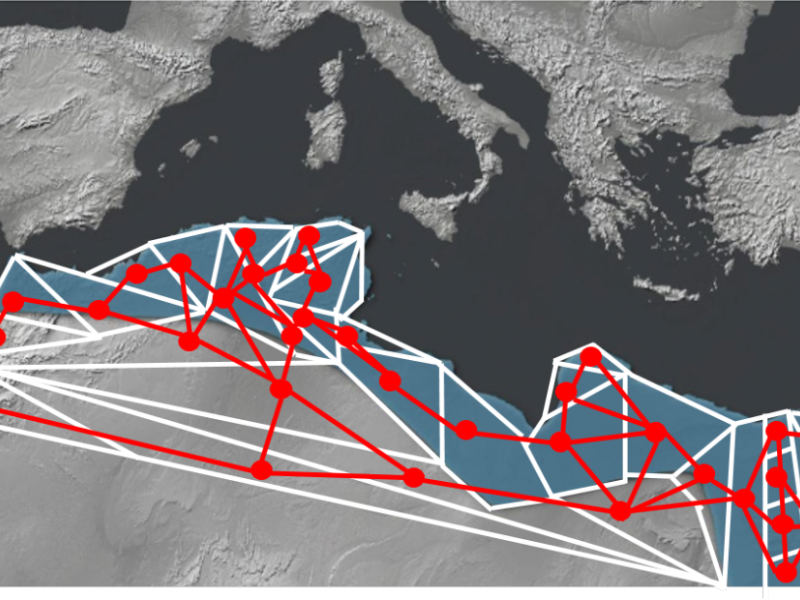The research topic of this project is at the interface between mathematics and archaeology and is based on an interdisciplinary collaboration between scientists from Zuse Institute Berlin, Mathematics Institute at Free University Berlin and German Archaeological Institute (Deutsches Archäologisches Institut). Our aim is to develop a novel network-based approach for inferring a well-defined range of socio-physical/historical phenomena from spatio-temporal data prevalent in Archaeology. The resulting framework is tailored to model processes such as innovation spreading, migrations and settlement development based on real-world 4D archaeological data.
In particular, within this project we focus on the archaeological evidence for the Romanization of Northern Africa. The starting point for this process is in 146 BC, when the region known nowadays as Tunisia, was annexed by Rome in the aftermath of the Third Punic War. The African province expanded further in the following centuries, with its greatest extent around 117 AD. The Romanization of the research area can be considered as a complex metaprocess with different interacting layers. Apart from an expected gradually developed adaptation due to the cultural exchange, some changes were actively introduced and enforced by the Roman conquerors, such as administrative structures, infrastructure and architecture.
In the first phase of the project, we were dealing with inferring the underlying processes from the observed patterns in the data. This is firstly a matter of identifying the relevant processes and secondly understanding their essential characteristics. We currently consider a data-set where the most important indicators for the cultural changes are the settlement structures of different city types, reflecting the adaptation to the Roman administrative structure and its changes over time. We study these processes of change as important indicators of the Romanization process. In particular, we focus on:
- Temporal characterizations: The investigated archaeological sites can be connected to specific predefined archaeological periods. In our project, most interesting are sites from the timeframe of: 330 BC – 30 BC (analogue to the period of the Roman Republic), 30 BC – 300 AD (analogue to the period of the Roman Empire) and 300 AD – 640 AD (analogue to the period of the Late Antique).
- Administrative characterizations: Roman city types were mostly defined hierarchically by their administrative structure. The highest ranking cities were the coloniae, i.e. independent cities with full Roman citizenship. Hierarchically subordinated and often dependent on the coloniae are the municipia. Finally, civitates only had a half autonomous status. Settlements in our data-set have been changing their administrative structure in time, driven by the Romanization process.



Figure:Map 1: Settlement structure in 330 BC – 30 BC (map by F. Schweigart); Map 2: Settlement structure in 30 BC – 300 AD (map by F. Schweigart); Map 3: Settlement structure in 300 AD – 640 AD (map by F. Schweigart); Maps 1-3 include data provided by: iDAI.world: iDAI.objects: https://arachne.dainst.org; iDAI.geoserver: https://geoserver.dainst.org/; Roger Bagnall, et al. (eds.), Pleiades: A Gazetteer of Past Places, 2016, http://pleiades.stoa.org/; Trismegistos: www.trismegistos.org; Digital Atlas oft the Roman Empire (DARE): https://dh.gu.se/dare/ (4.0 International license)
These characterizations are used to describe one layer of the complex Romanization process on the time-evolving network of ancient cities. With the development of cities came the development of the Roman infrastructure, especially the Roman road network connecting the ancient cities. In order to complete the gaps in the known Roman road network of Tunisia and to investigate the development of the chronological and spatial growth of the roads, we want to reconstruct the Roman road network for each time period. To this end, the temporal network inference techniques (regarding topology, parameters of the spreading process and their temporal evolution) are being developed, that allow to:
⦁ include potential additional knowledge about the process (by prior distributions or constraints),
⦁ take into account the observation error,
⦁ estimate the uncertainty of the inferred topology as well as the uncertainty of the parameters.
In this way, the proposed project aims at providing new methods for reconstructing network topology from incomplete data on the driving complex processes, contributing to the solution of a long-standing issue in archaeological network analysis. Based on inferred network topology and spreading process, further analysis will permit to compute quantities like "the most probable path of the spreading process", as well as the related uncertainties.
Project related events:
Workshop "Mathematics for the Human Past", 9-10.12.2019, Zuse Institute Berlin.
